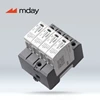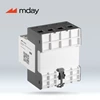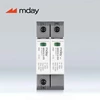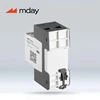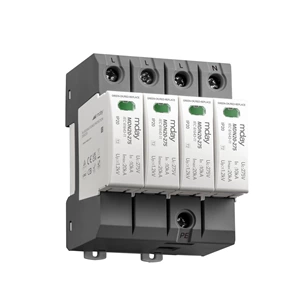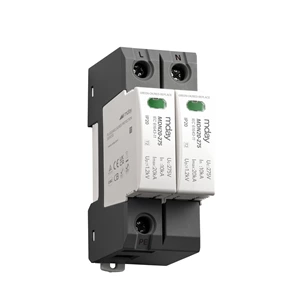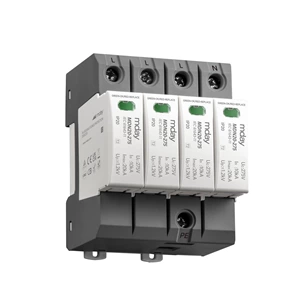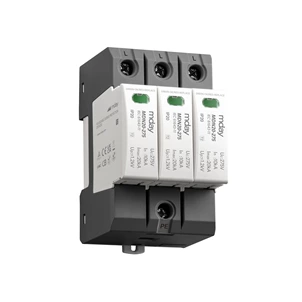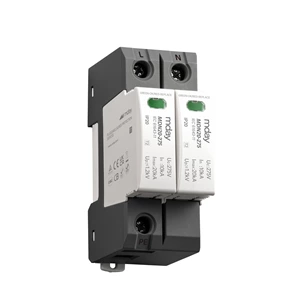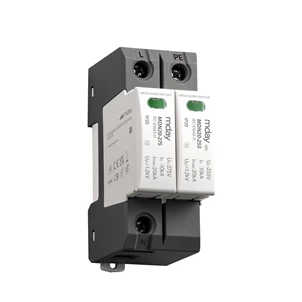Do You Know The Up Value Of Surge Protector?
As an important protective device, surge protector plays an important role in protecting equipment from surge current. When choosing a surge protector, an important parameter is the Up value. So, do you really understand the Up value of the surge protector?
1. What is Up
First, let's understand the meaning of the Up value. The voltage protection level (Up) is the maximum voltage between the terminals of the surge protector, which is also the maximum voltage value allowed under normal working conditions of the surge protector. The lower the Up value, the faster the surge protector can limit the voltage to a safe range when the equipment is subjected to overvoltage shock, thereby protecting the safe operation of the equipment. The Up value should be greater than the maximum value of the measured limiting voltage.
2. Up value under the national standard
When selecting the appropriate voltage protection level value of the SPD, the surge tolerance of the protected equipment (or the impact immunity of key equipment) and the nominal voltage of the system should be considered. The lower the voltage protection level value, the better the protection performance.
1. GB/T 18802.11 standard requires that Up must be less than or equal to the rated value of the surge withstand voltage Uw of the protected equipment, usually: Up≤Uw; in low-voltage power supply system, Uw represents the ability of the equipment's insulation to withstand overvoltage.
Surge protector voltage protection level
2. IEC 60364 standard requires that the voltage protection level of SPD at the 230/400Vac power grid inlet should be no more than 2.5kV. This value meets the withstand voltage of electromechanical equipment and requires that the impact tolerance of electronic equipment interfaces is low. More sophisticated protection is usually configured with SPDs with Up (voltage protection level) no more than 1.5kV.
Surge protector matching
3. National standard GB50057-2010 Section 4.2.4.8: The voltage protection level value of SPD installed on the power supply side of the main distribution box where the power supply is introduced and the switch in the distribution box should be less than or equal to 2.5kV.
From the above, we can see that the three standards have the same recommended selection of Up value. In the 230/400V AC system, the maximum impact voltage that threatens the equipment is expected to be 2.5kV; when selecting the Up of the surge protector, generally Up ≤0.8*Uw, retaining a 20% margin, or the recommended Up in the table can be used to ensure effective protection of the equipment
III. Principles for selecting Up value
After determining the limit of the Up value according to the national standard requirements, according to GB/T 18802.12-2014 Standard Specification for the Selection and Use of Surge Protectors for Low-voltage Distribution Systems, Section 5.5.3.2, the Up value should be equal to or greater than the maximum value of the measured limiting voltage, and can be selected from the following preferred values:
A small Up value is beneficial to protecting the equipment, but the smaller the Up value, the better. It should be appropriately selected considering factors such as temporary overvoltage TOV to match the protected equipment.
Surge protector UP value parameters
A small Up value is beneficial to protect the equipment, but the smaller the Up value, the better. It should be appropriately selected considering factors such as temporary overvoltage TOV to match the protected equipment. Secondly, the larger the maximum continuous working voltage Uc or the nominal current In, the larger the Up value will be. When the Up value cannot be met after determining the other parameters of the SPD, it is necessary to comprehensively consider and select the Up value that is closest to the conditions.
When choosing a surge protector, it is very important to understand the meaning of the Up value and select it according to actual needs. Only the appropriate voltage protection level (Up) can effectively protect the equipment and improve the stability and reliability of the equipment.


